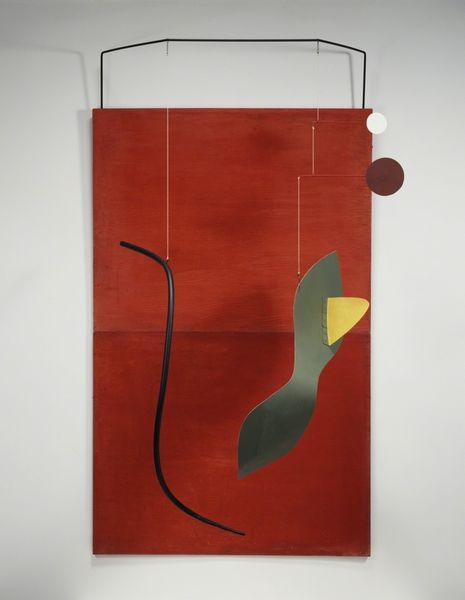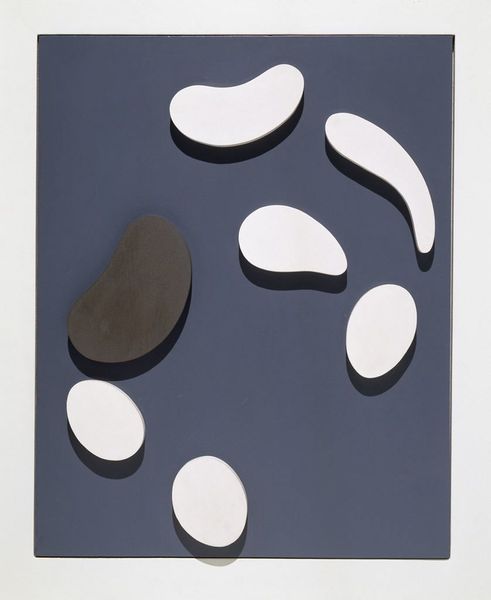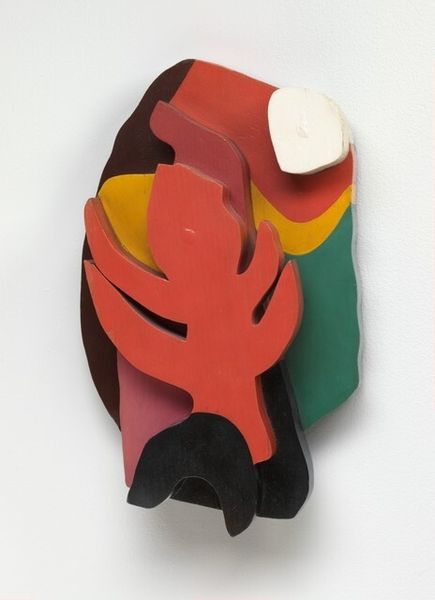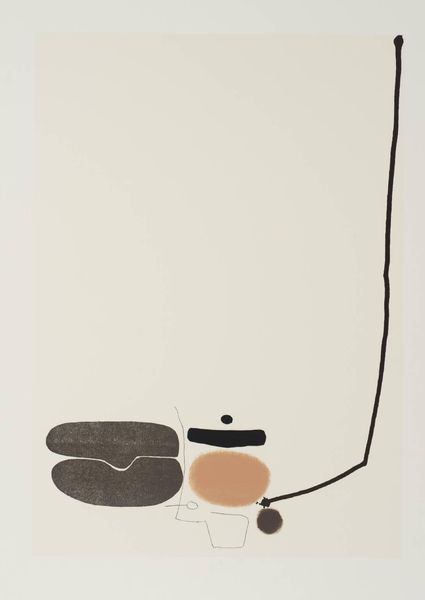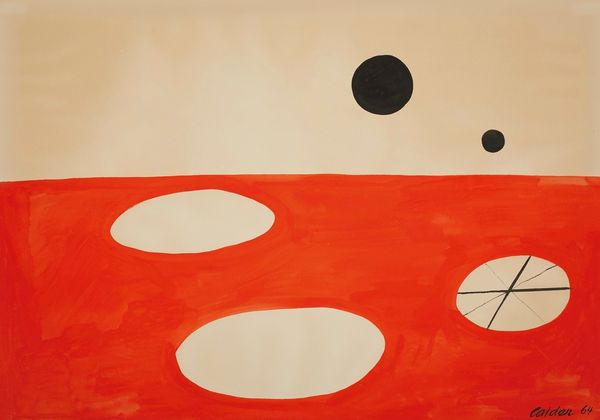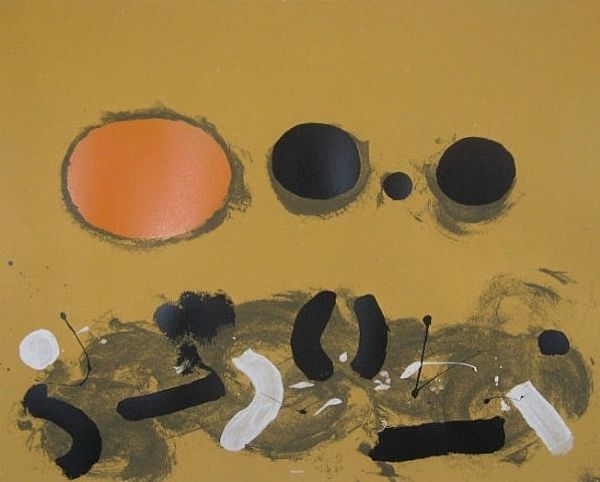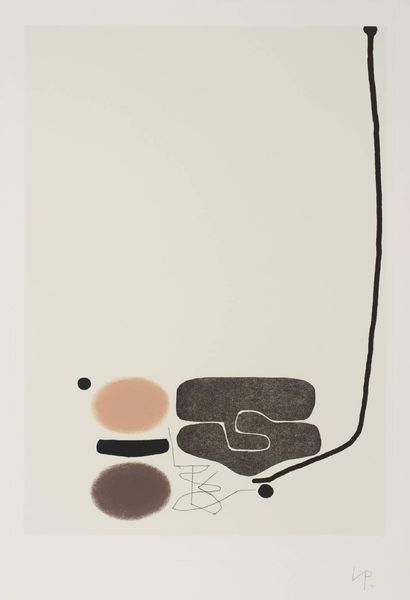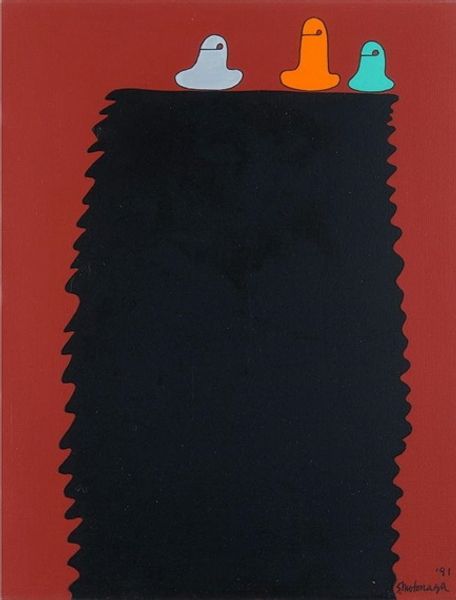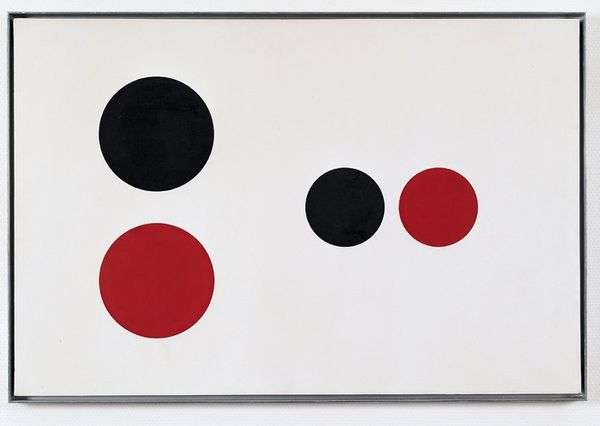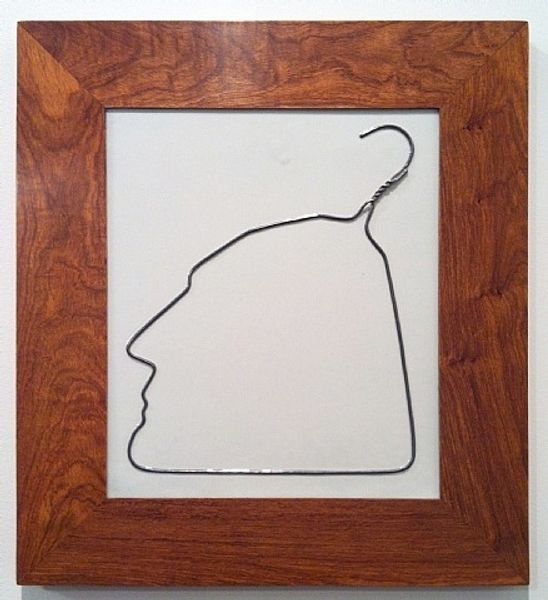
Copyright: Alexander Calder,Fair Use
Curator: “THE ORANGE PANEL” from 1936 by Alexander Calder immediately strikes me with its playful dynamism. It feels like a deconstructed circus, doesn’t it? Editor: The color is certainly engaging. It evokes a warmth, but also a synthetic quality that challenges expectations of mid-century art. The piece uses mixed-media in relief – wood and wire most likely? Curator: Indeed. Calder came from a family of artists. His father was a sculptor, his mother a painter. Looking at this work, you have to consider the historical avant-garde movements shaping artistic experimentation like Dada and Constructivism. We're also in the middle of the Depression. To what extent does Calder address social issues through his work, and can abstraction become its own form of protest? Editor: Protest, perhaps. But also, pure form. Look at how the black and white shapes interact, creating a tension of positive and negative space, offset by the burnt sienna plane. The single sinuous line almost feels musical. What does this suggest about Calder’s interest in the purely aesthetic, even pleasurable arrangement of elements? It recalls Mondrian's emphasis on orthogonal compositions. Curator: You’re right, the Constructivist element is undeniable, although Calder introduces chance and lightness through wire and dynamic form, which contrasts with the grid system of an artist like Mondrian. I am fascinated by how he entered the Parisian art scene and started creating toys initially. And it evolved into the more ambitious Mobiles for which he is known, works supported by a network of collectors and galleries during a period of vast socioeconomic change. Editor: Absolutely. The balance—literal and figurative—is remarkable. The visual harmony of primary-like forms and a muted but energized palette reveals his artistic intention: it is a move away from purely mimetic modes to something rooted in phenomenological encounter, where we consider object, viewer, and space in dialogue. It presents a playful reality through geometric precision. Curator: Looking back on the era, and at Calder’s work more specifically, one can’t escape his art's contribution to the evolving discourse around abstraction and representation, especially when seen against a backdrop of political turmoil. Editor: And ultimately, despite the complexities of the era and our interpretations, it’s a beautiful exercise in balance and visual energy. A formal dance!
Comments
No comments
Be the first to comment and join the conversation on the ultimate creative platform.
